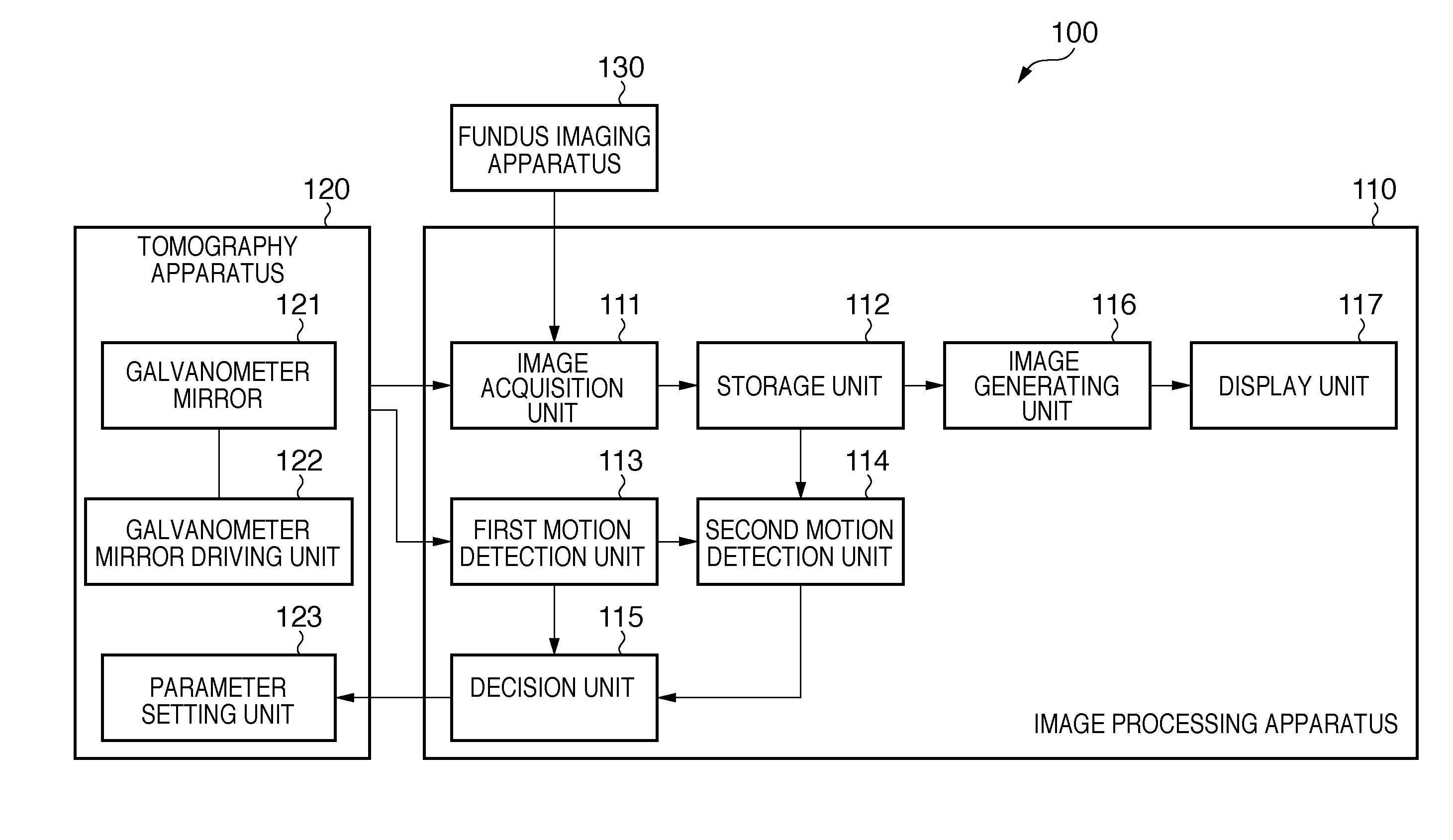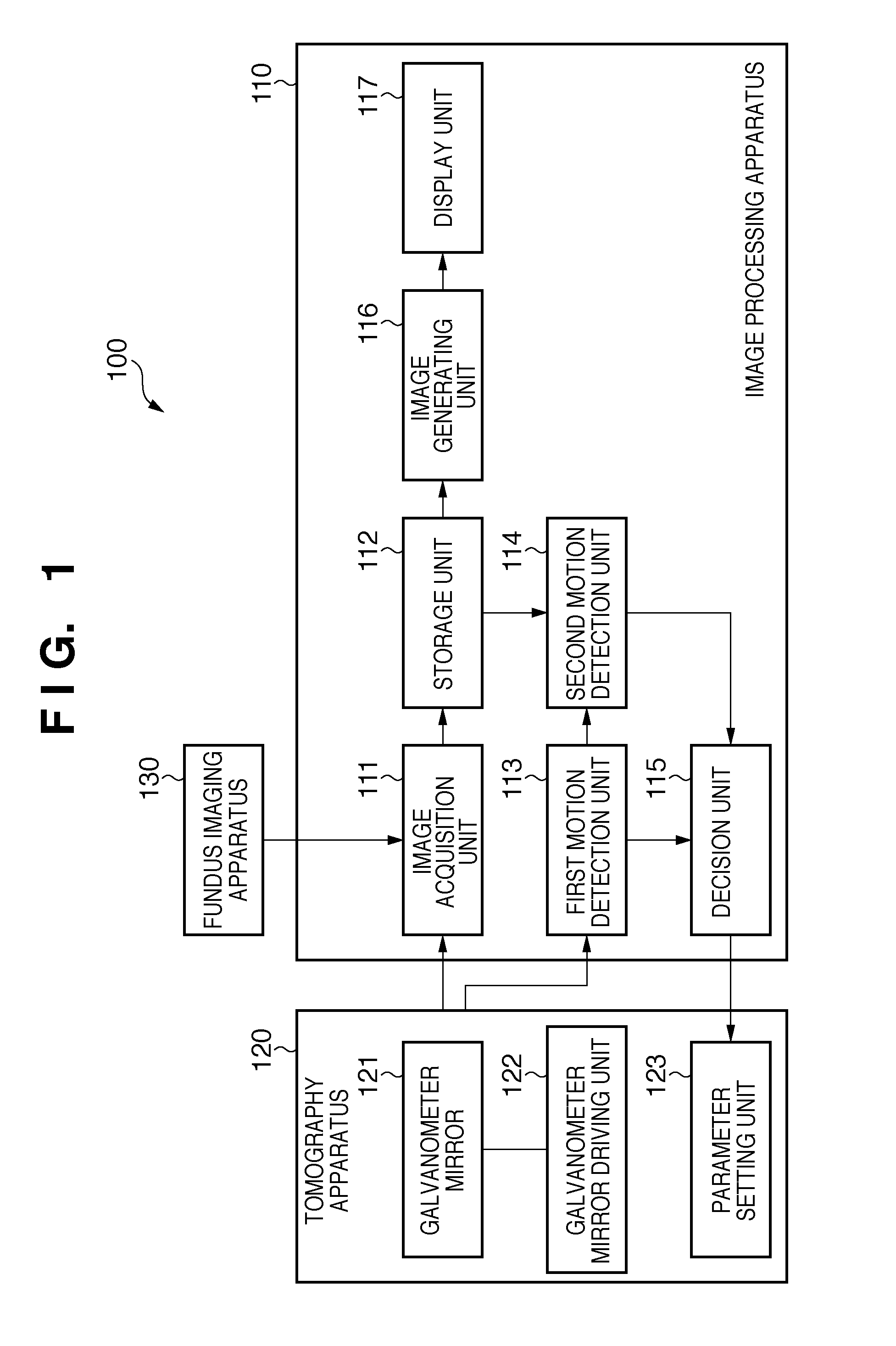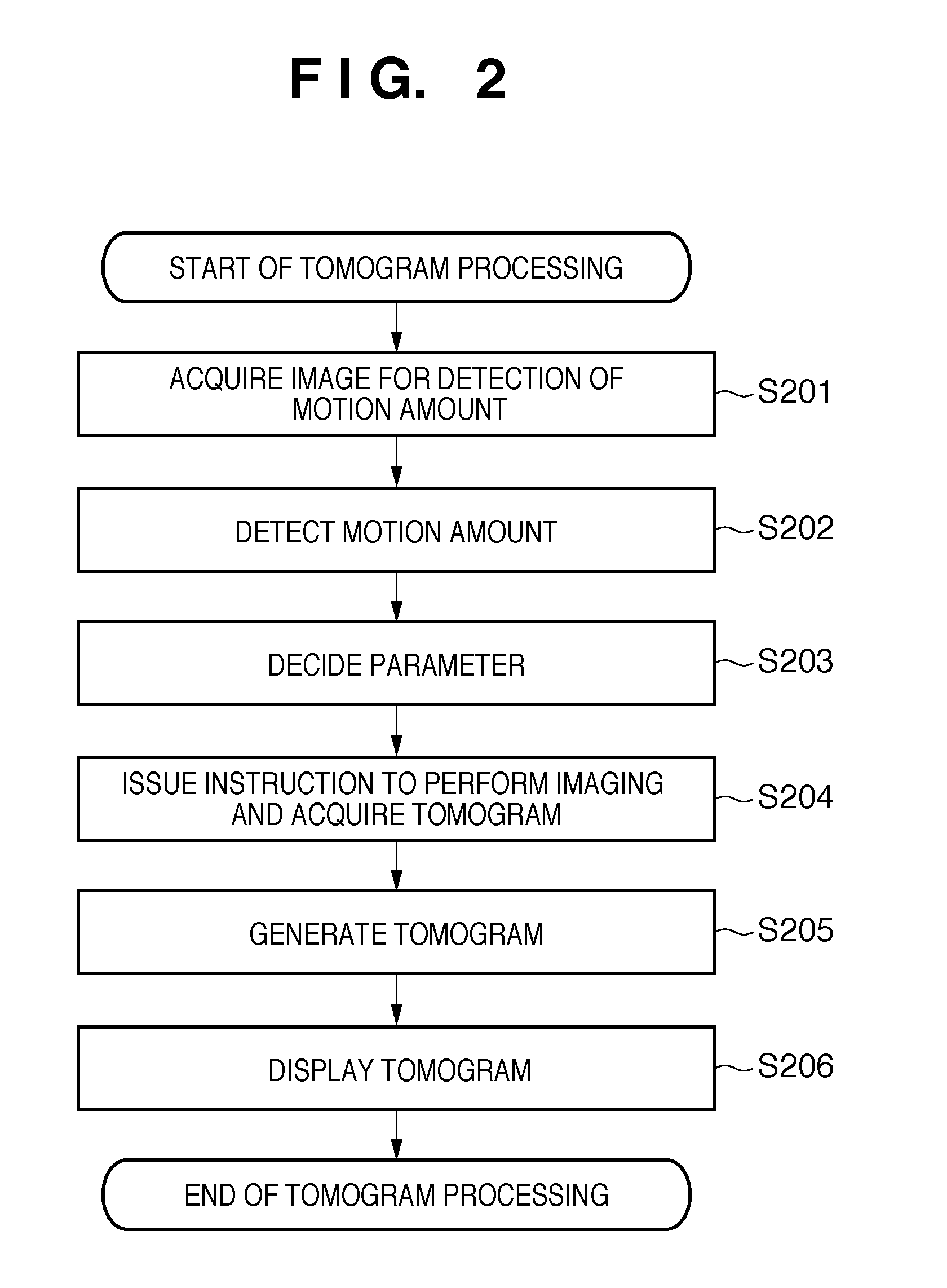Image processing apparatus and image processing method
- Summary
- Abstract
- Description
- Claims
- Application Information
AI Technical Summary
Benefits of technology
Problems solved by technology
Method used
Image
Examples
first embodiment
[0034]The first embodiment of the present invention will be described below with reference to the accompanying drawings. A characteristic feature of an image processing apparatus according to this embodiment is that it detects the motion amount of an eye to be examined (per unit time) when performing imaging by the oversampling method or the averaging method and performs imaging based on imaging conditions corresponding to the detected motion amount.
[0035]This embodiment is configured to perform imaging using the oversampling method or the averaging method under imaging conditions corresponding to the motion amounts of the eyes of each individual, and hence can generate a low-noise, high-resolution tomogram while minimizing the influences of movement of the individual's eyeballs, the head or the like.
[0036]An image processing system including an image processing apparatus according to this embodiment will be described in detail below.
[0037]
[0038]FIG. 1 is a block diagram showing the...
second embodiment
[0090]The first embodiment described above is configured to perform imaging for the detection of motion amounts to set imaging conditions and capture a tomogram again. However, the present invention is not limited to this. For example, when performing imaging under predetermined imaging conditions and processing an acquired tomogram, the present invention may be configured to perform processing corresponding to the motion amounts of the eye. This embodiment will be described in detail below.
[0091]
[0092]FIG. 6 is a block diagram showing the arrangement of an image processing system 600 including an image processing apparatus 610 according to this embodiment. As shown in FIG. 6, the image processing system 100 described in the first embodiment differs in functional arrangement from the image processing apparatus 610. The differences between the functional arrangements will be mainly described below.
[0093]As shown in FIG. 6, the image processing apparatus 610 includes an image acquisit...
third embodiment
[0111]The first embodiment described above is configured to decide parameters based on the tomogram and fundus image acquired by imaging for the detection of the motion amounts of the eye and process the tomogram acquired by imaging using the decided parameters. However, the present invention is not limited to this. For example, the present invention may be configured to detect motion amounts even while performing imaging using decided parameters, decide parameters again upon detecting a motion amount equal to or more than a predetermined threshold, and automatically redo imaging.
[0112]This makes it possible to keep generating tomograms with high image quality even if a large change, for example, blinking or microsaccades, occurs during imaging, because parameters are set again based on the motion amounts detected during imaging.
[0113]This embodiment will be described in detail below with reference to FIG. 8. Note that the functional arrangement of an image processing apparatus of t...
PUM
 Login to View More
Login to View More Abstract
Description
Claims
Application Information
 Login to View More
Login to View More - R&D
- Intellectual Property
- Life Sciences
- Materials
- Tech Scout
- Unparalleled Data Quality
- Higher Quality Content
- 60% Fewer Hallucinations
Browse by: Latest US Patents, China's latest patents, Technical Efficacy Thesaurus, Application Domain, Technology Topic, Popular Technical Reports.
© 2025 PatSnap. All rights reserved.Legal|Privacy policy|Modern Slavery Act Transparency Statement|Sitemap|About US| Contact US: help@patsnap.com



